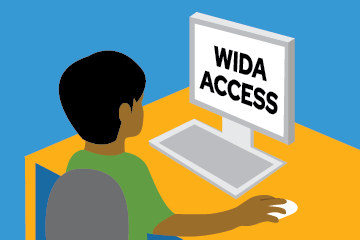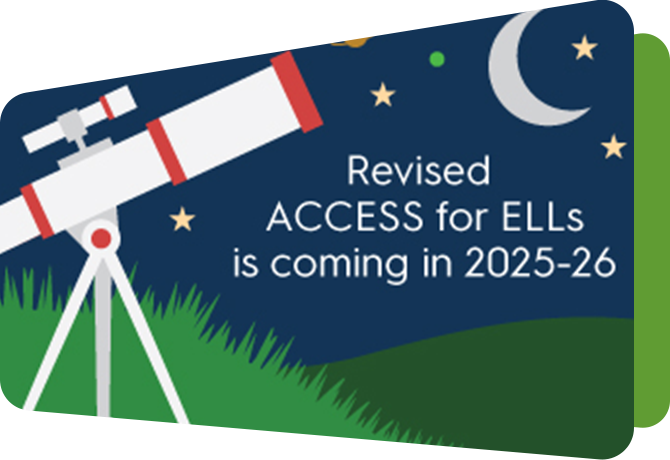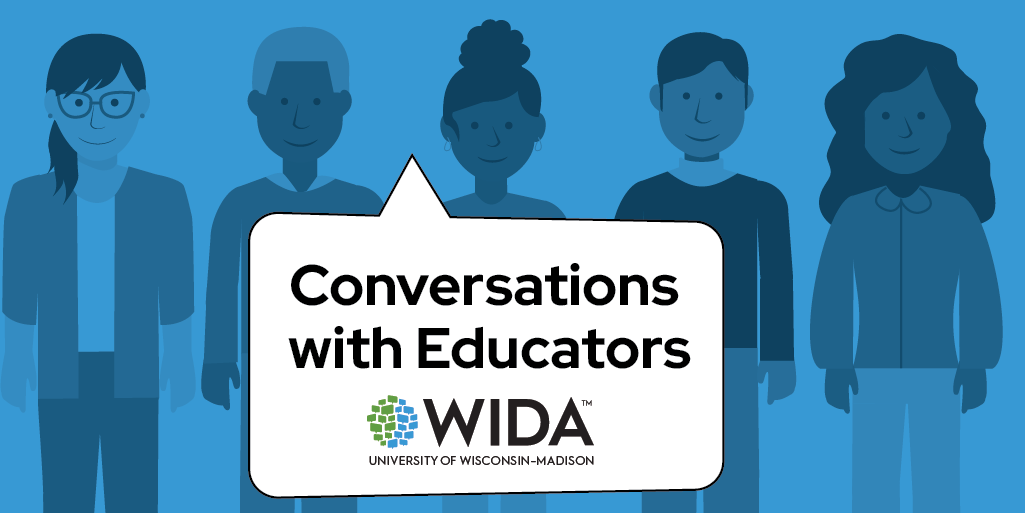Behind the scenes of WIDA ACCESS

In the 2025-2026 school year, WIDA ACCESS (ACCESS) test content will reflect the WIDA English Language Development (ELD) Standards Framework, 2020 Edition.
ACCESS is WIDA’s summative English language proficiency assessment that is made up of four tests: Listening, Reading, Speaking and Writing. All students identified as English learners in the WIDA Consortium take ACCESS once a year.
How Do the Changes to ACCESS Affect Test Administrators and Students?
WIDA made all the changes to ACCESS (grades 1-12) behind the scenes so that the test administration and student test-taking experiences are the same this school year as they were last school year.
While changes to ACCESS happened behind the scenes, WIDA ACCESS for Kindergarten (Kindergarten ACCESS) got a full, center stage makeover. Learn about the changes to Kindergarten ACCESS on the WIDA ACCESS in 2025-2026 webpage.
Why Did WIDA Need To Update ACCESS?
ACCESS is a standards-referenced test. This means that student performance is compared to the WIDA ELD Standards Framework. Any student can achieve any score, and students are not ranked against each other or against the expected performance of monolingual English speakers.
With the release of the 2020 Edition a few years ago, test developers have been working hard to incorporate this edition of the standards into ACCESS test content.
There’s a video for that! Watch the Revising ACCESS: The Impact of the Standards Framework, 2020 Edition video to learn more about how the standards connect to ACCESS.
Revising ACCESS: The Impact of the Standards Framework, 2020 Edition Transcript
What Changes Did WIDA Make to ACCESS?
Listening and Reading Tests
The 2020 Edition emphasizes that out of the five WIDA ELD Standards Statements, Standard 1, Language for Social and Instructional Purposes, is broader in scope and applicability than the other four statements. Standard 1 applies across content areas and classrooms. Language is a part of the entire school day — from mathematics to physical education.
Previously, Standard 1 was only used in initial ACCESS tasks or on tasks targeting lower proficiency levels. Now, Standard 1 is incorporated throughout ACCESS, and the Listening and Reading tests have more questions that assess Standard 1.
This change better reflects what happens in classrooms and schools as social and instructional language permeates students' academic experiences.
There’s a video for that! Watch the Revising ACCESS: Emphasizing Standard 1 in the Listening and Reading Tests video to see examples of these changes.
Revising ACCESS: Emphasizing Standard 1 in the Listening and Reading Tests Transcript
Speaking and Writing Tests
The basic structure of the ACCESS Speaking test tiers remains the same. Previously, the ACCESS Online Speaking Tier Pre-A (designed specifically for newcomer students) and Tier A tests used the same P1 tasks. Now, Tier A P1 tasks will target the end of proficiency level 1. This change gives students more opportunities to show what they can do and receive credit for it.
Learn more about ACCESS tiers in the ACCESS Test Administrator Manual (WIDA Secure Portal login required).
The ACCESS Writing test format also remains the same. However, raters at DRC will use the new WIDA Writing Scoring Rubric Grades 1-12 to score student responses. The new rubric has score points that range from 0-7. These score points still represent raw scores and not proficiency levels. The rubric no longer includes plus score points.
Learn more about the process for developing the WIDA Writing Scoring Rubric Grades 1-12 in a 2024 WIDA Technical Report.
There’s a video for that! Watch the Revising ACCESS: Updates to the Speaking and Writing Tests video to learn more about these changes.
Revising ACCESS: Updates to the Speaking and Writing Tests Transcript
Want to learn more about ACCESS in 2025-2026? Mark your calendar for the Welcome Back: What's New in 2025-2026? assessment webinar on September 2 at 1:00 p.m. CT.





